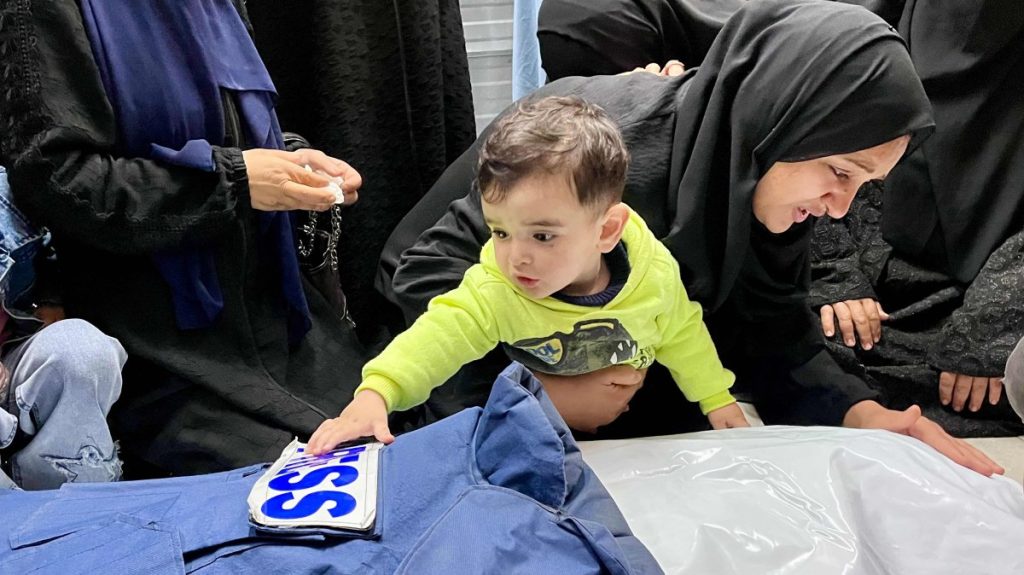Those who cannot even comprehend, let alone accept with ease, a reality in which they personally experience what the people of Gaza have been experiencing over the course of a genocide ought to remain eternally silent, unless they have chosen to oppose it with all their strength. That it is natural not to be able to comprehend such a reality is largely due to the particular form in which it is widely presented. This form involves a strong advertising strategy that reshapes the content, ultimately making it more “digestible” for the consumer – a goal that every aspiring advertising strategist takes quite seriously. The strategy is indeed so grotesque that the consumer is expected to counterbalance the moral weight of the reality of genocide by appealing to such meaningless phrases as “human shields.”
For those who are prepared to justify the genocide in Gaza, including by rejecting its description as such, reality must be presented through a medium of advertising as described. For those who are interested in actually understanding reality, however, its presentation cannot involve anything artificial. It must be pure and simple. And this is exactly what Forensic Architecture, a research group based at Goldsmiths, University of London, aims for in their investigations. “A Cartography of Genocide” is their attempt to present, in the purest and simplest terms, the reality in Gaza which otherwise defies comprehension, let alone acceptance.
Forensic Architecture’s investigations are exemplary of what can be done to ensure the highly sought-after “impartiality” in the presentation of reality. Of course, this is not compatible with the mass media’s own method of platforming opposing voices to simulate impartiality. By this method of lending credibility to what the perpetrator of a crime claims in a news headline, we are told that impartiality is guaranteed. And this is technically true – but only trivially so, and only if what is meant is the impartiality of narrative. Yet the point is not to find another weight to place on the scale to counterbalance the moral weight of the reality of genocide, but to verify the material conditions of that reality, so that no artificial scale need be introduced in the understanding of what can and must be understood purely and simply.
This is the method of architectural forensics: It combines architectural analysis, open-source intelligence and witness testimony. And this is how “A Cartography of Genocide” offers a picture of reality that resists distortion. Unlike the mass media, it is not in the business of artificially constructing a language of balance and impartiality. Instead, it reveals the absence of shelter, the impossibility of escape and the spatial characteristics of violence. Through careful and detailed reconstructions of bombings, timestamps, satellite imagery and masterfully created maps, Forensic Architecture effectively compiles “evidence of reality.”
The term “evidence of reality” is admittedly perplexing. When do we ever need evidence to verify that reality is indeed real? Perhaps the evidence serves another purpose in this context. Perhaps it is not designed to convince those who still find ways to look away, but rather to support those who refuse to do so – to furnish them with tools and frames of reference strong enough to withstand the corrosive forces of propaganda. “Evidence of reality” is a political necessity, not because reality itself demands evidence, but because its visibility is actively suppressed – or “balanced,” as the jargon has it. When a child’s body is pulled from rubble and reported as collateral damage, it is no longer regarded as part of a reality in which we can partake. For no one can imagine themselves in a reality in which they are collateral damage.
Reconstructing the scene using architectural modeling, on the other hand, has the opposite effect. It makes visible the fact that the roof collapsed not from internal structural failure, but from a 2,000-pound bomb that entered through a specific angle, tracked back to an F-35 flight path logged publicly online. We cannot imagine ourselves to be collateral damage, but we can certainly imagine how a 2,000-pound bomb could fall upon our roofs at a specific angle.


